Titian
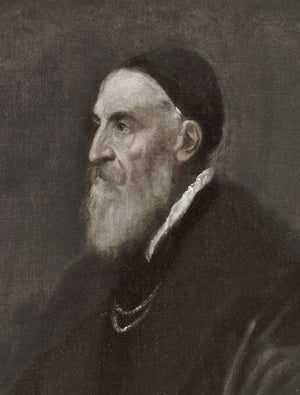
| Birth name: | Titian Vecelli (o Vecellio). |
|---|---|
| Artistic name: | Titian. |
| Nationality: | Italy |
| Year of birth: | Around 1490, Pieve di Cadore, Veneto, Italy. |
| Year of death: | 1576, Venice. |
| Period: | High Italian Renaissance |
| Styles: | Renaissance, Manierismo, Escuela veneciana |
Known for his decisive, energetic, and very expressive brushstroke, the Renaissance painter Titian Vecellio, also called simply "Titian," was the most distinguished member of the Venetian school. He masterfully handled asymmetrical and non-hierarchical compositions. Many of the foundational elements of his style were forged from the ideas of the great master Giovanni Bellini. After his death, Titian evolved and continued to modernize them throughout his life.
Paintings by Titian
There are many cases in history where painters are recognized posthumously, but Titian is not one of them; quite the opposite, he was acknowledged by his own peers as a great master. He was versatile in his expertise for different genres and themes: portrait, landscape, altarpiece, historical painting, biblical scenes, allegory, mythology, naturalism, etc.
-
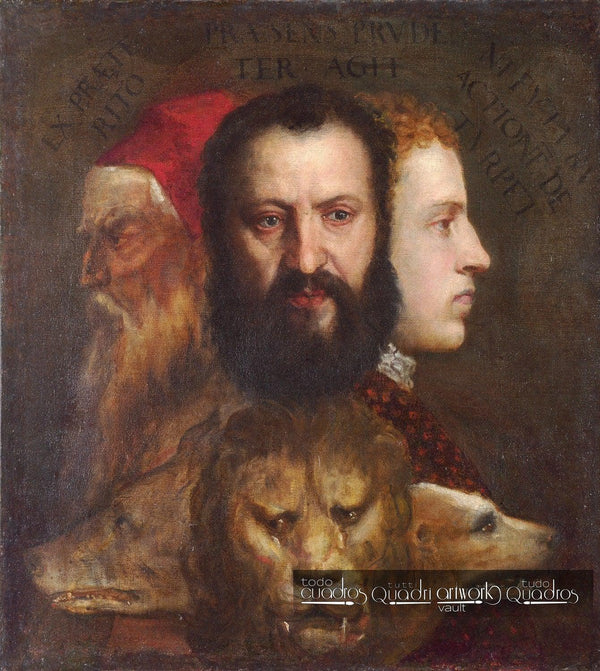
Autor: TitianAño: circa 1570Se encuentra en: The National Gallery, LondresEstilo: RenacimientoOriginal title: Allegoria della PrudenzaTítulo (inglés): Allegory of PrudenceTipo: CuadroTécnica: ÓleoSoporte: LienzoObra conceptual llena de simbología, donde el autor quiere poner de manifiesto su idea sobre las edades del hombre y sus características.
No existe una interpretación oficial ni única entre los expertos, pero todos coinciden en que se exalta la figura del hombre en su punto de madurez, ya que de los tres representados es el único que mira al presente y tiene la virtud de la prudencia.
Técnicamente esta alegoría es un retrato de 3 personas más 3 animales, las figuras e iluminación son realistas.
En la parte superior se leen tres frases:
"EX PRAETERITO", "PRAESENS PRUDENTER AGIT" y "NE FUTURA ACTIONẼ DETURPET".
Significan respectivamente:
"Desde el pasado", "Prudencia en el presente" y "No arruinar los actos del futuro". -
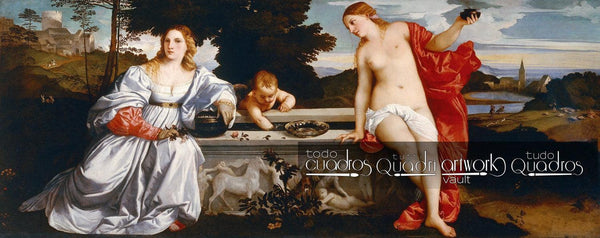
Autor: TitianAño: circa 1514Se encuentra en: Galería Borghese, Roma.Estilo: ManierismoOriginal title: Amor sacro e Amor profanoTipo: CuadroTécnica: ÓleoSoporte: LienzoComposición de temática mitológica, ha sido objeto de numerosas interpretaciones, contradictorias en muchos casos. Los elementos simbólicos que incluye son: fuente con tallado (en el centro), 2 liebres, Cupido (figura infantil central), construcción fortificada (izquierda), iglesia (derecha).
-
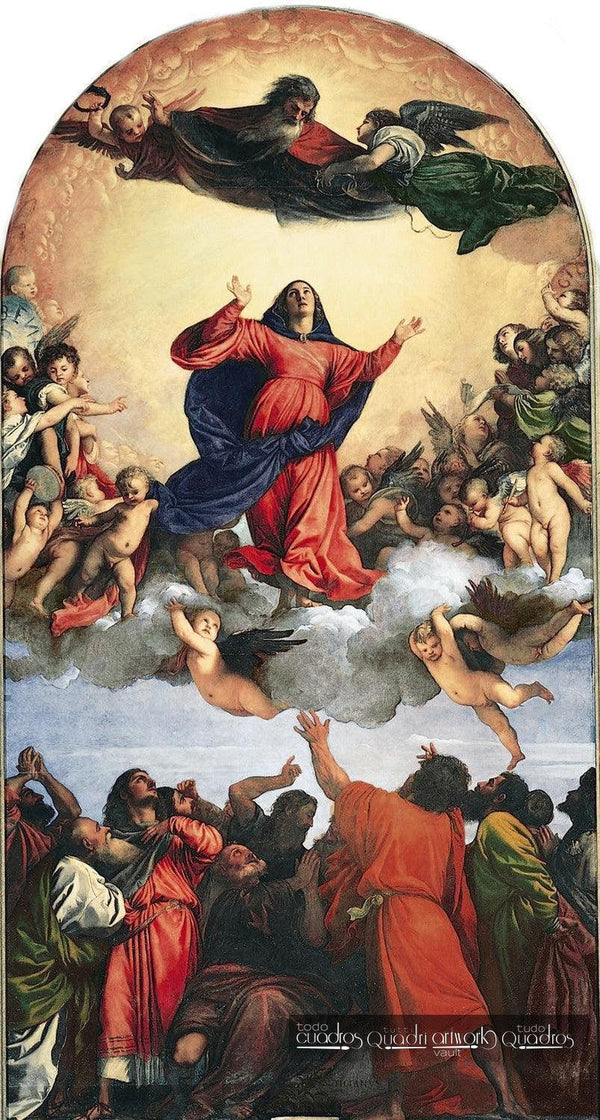
Autor: TitianAño: circa 1518Se encuentra en: Basílica de Santa María dei Frari, Venecia.Estilo: RenacimientoGénero: AlegoríaOriginal title: AssuntaTipo: CuadroTécnica: ÓleoSoporte: Tabla de maderaSe trata del óleo más grande que hay y que ha habido en la ciudad de Venecia hasta el día de hoy, permanece en el mismo lugar original, donde fue pintado. En gran parte esta obra fue responsable de catapultar la fama de Tiziano en la zona, aunque no sin polémica, ya que no pocos cercanos a la congregación tenían serias dudas sobre calidad de la pintura.
Retablo alegórico que muestra la asunción de la Virgen María, es decir, el momento en que fue llevada por Dios al cielo, en carne y hueso, tal como describe la tradición cristiana. Se considera obra modélica del estilo renacentista italiano.
En la capa inferior los apóstoles simbolizando a quienes aún viven en el mundo y claman al cielo la intercesión de Ella. La figura central de la Virgen, caminando sobre las nubes, aparece totalmente rodeada de angelitos y querubines. En la parte superior aparece Dios Padre, iluminado y mirando hacia abajo, junto a dos ángeles.
-

Autor: TitianAño: circa 1520Se encuentra en: The National Gallery, LondresEstilo: ManierismoTema: Mitología griegaOriginal title: Bacco e AriannaTítulo (inglés): Bacchus and AriadneTipo: CuadroTécnica: ÓleoSoporte: LienzoEste cuadro de temática mitológica fue uno de los encargados originalmente por el duque Alfonso I de Este a Rafael Sanzio, quien murió habiéndolo apenas empezado. El propósito de la obra fue decorar una estancia de una de las residencias del Duque.
Describe un episodio literario, donde el dios Baco (o Dionisio), baja del carruaje para atraer a la bella hija de reyes Ariadna.
Aquí Tiziano hace gala de su superlativa pericia como anatomista, al dibujar las más heterogéneas criaturas, humanas, semihumanas y animales.
-
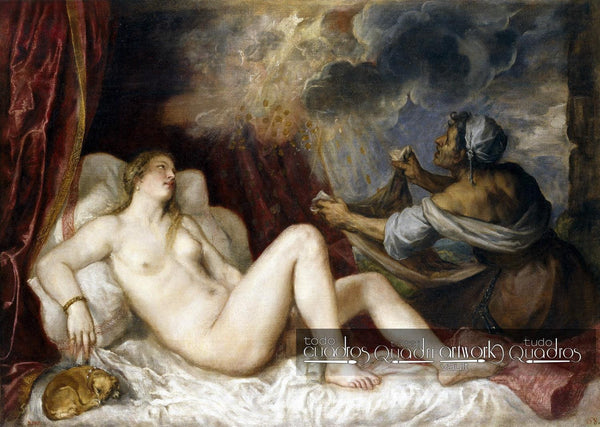
Autor: TitianAño: 1565Se encuentra en: Prado MuseumEstilo: ManierismoOriginal title: DanaeTipo: CuadroTécnica: ÓleoSoporte: LienzoSe trata de un retrato de Danae, el personaje de la mitología griega, en una escena ampliamente tratada por el artista, a lo largo de su carrera.
Esta copia en concreto fue adquirida por el mismísimo Diego Velázquez quien era un público admirador de Tiziano y lo tubo por uno de sus principales referentes pictóricos.
-
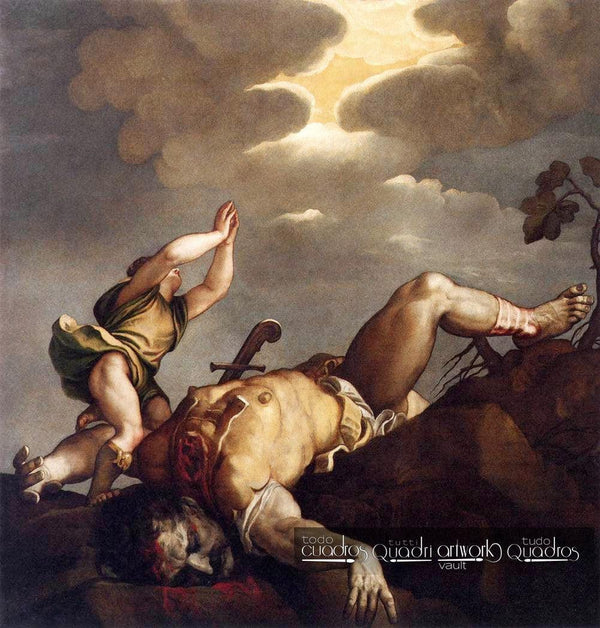
Autor: TitianAño: circa 1542Se encuentra en: Basílica Santa María de la Salud, Venecia.Estilo: ManierismoOriginal title: Davide e GoliaTipo: CuadroTécnica: ÓleoSoporte: LienzoEsta es una de las tres obras que Tiziano pintó para instalar en el techo de la basílica. Las otras dos muestran a "Caín y Abel" y "El sacrificio de Isaac".
En un incendio del año 2010 sufrió daños por el agua vertida en las labores de extinción, pero fue recuperado casi totalmente.
El punto de vista de la escena es desde abajo, dando mayor protagonismo al cielo y al rayo de luz que aparece entre las nubes. La iconografía empleada es muy inusual en esta escena bíblica, ya que se aprecia a David rezando al cielo, después de haber derrotado al gigante.
-
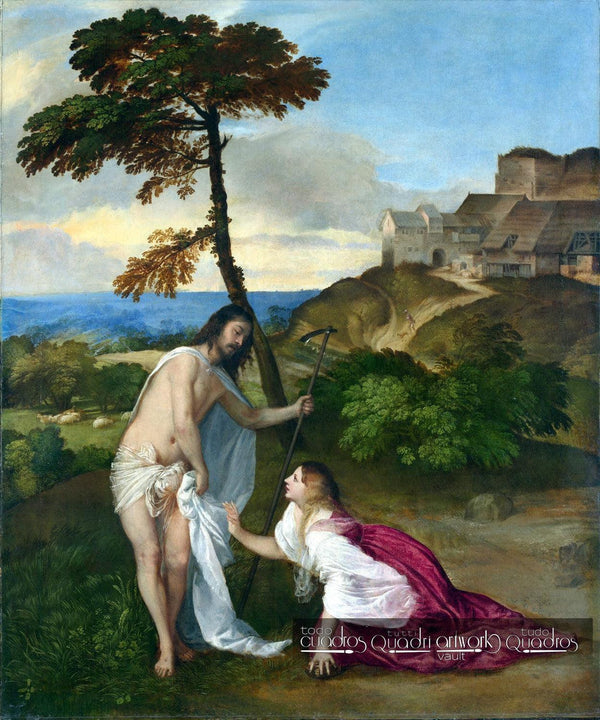
Autor: TitianAño: circa 1514Periodo: Alto renacimientoTítulo en inglés: Christ and Mary Magdalene (Noli me tangere)Tipo: CuadroTécnica: ÓleoSoporte: LienzoPertenece al periodo más temprano del artista, fuertemente impregnado de la más pura escuela veneciana. Muestra el muchas veces pintado pasaje bíblico, donde María Magdalena quiere agarrarse al Señor al verlo resucitado, a lo que él le dice:
"No me toques, que aún no he subido al Padre. Ve y anuncia a mis hermanos..." -

Autor: TitianAño: circa 1560Se encuentra en: Museo J. Paul Getty, California.Estilo: Alto renacimientoTítulo en inglés: The Penitent MagdaleneTipo: CuadroTécnica: ÓleoSoporte: LienzoEsta es una de las al menos 7 versiones muy similares donde Tiziano retrató al mismo personaje bíblico. En tiempo de la contrarreforma, donde la Iglesia Católica experimentaba uno de sus más grandes cismas tras la aparición del protestantismo. Con imágenes como esta se quería exaltar los orígenes y las tradiciones del catolicismo.
Esta versión en concreto, fue utilizada por el artista como modelo para las demás, estudios con rayos X han revelado la gran cantidad de cambios que tiene, lo que denota que fue conservada y retocada a lo largo de varios años.
-
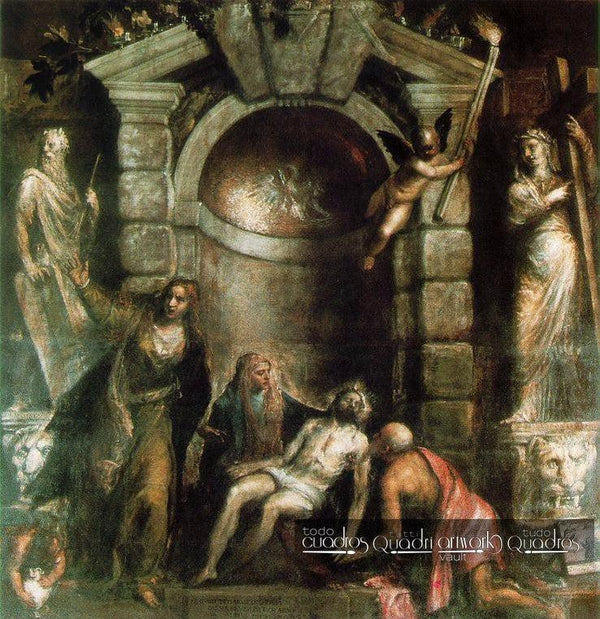
Autor: TitianAño: circa 1575Se encuentra en: Galería de la Academia de Venecia.Estilo: RenacimientoOriginal title: PietàTipo: CuadroTécnica: ÓleoSoporte: LienzoSe trata de la última pintura conocida realizada por Tiziano, tras su muerte fue acabada por su discípulo apodado Palma el Joven.
Muestra una escena imaginaria de 5 personajes bíblicos en un entorno arquitectónico estilo romano. Los personajes describen un perfecto triángulo de Kepler, ascendiendo de izquierda a derecha: Moisés, María Magdalena, La Virgen María, Jesús y Nicodemo.
-
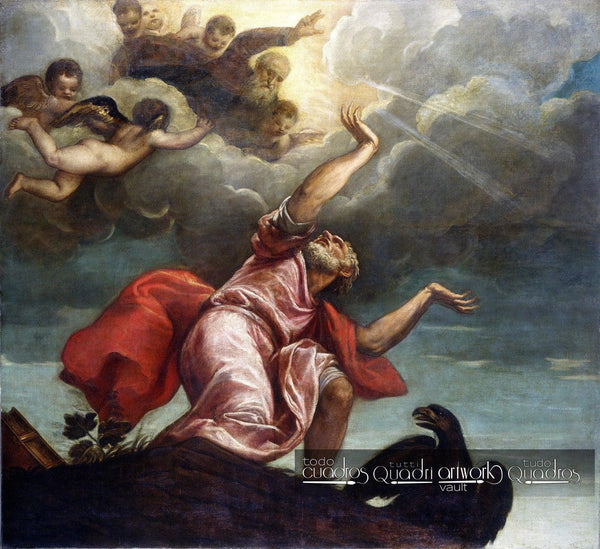
Autor: TitianAño: circa 1547Se encuentra en: Galería Nacional de Arte (NGA), Washington, EE. UU.Estilo: Alto renacimientoTítulo (inglés): Saint John the Evangelist on PatmosTipo: CuadroTécnica: ÓleoSoporte: LienzoObra de gran tamaño para ser exhibida en lo alto, destaca por su pincelada decidida en las figuras y difusa en el fondo, características del artista.
-
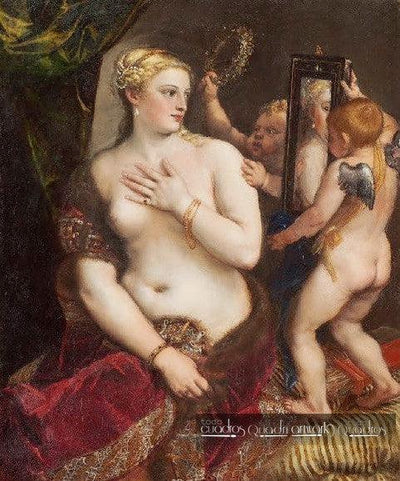
Autor: TitianAño: 1555Se encuentra en: Galería Nacional de Arte (NGA), Washington, EE. UU.Estilo: Alto renacimientoOriginal title: Venere allo specchioTítulo (inglés): Venus with a MirrorTipo: CuadroTécnica: ÓleoSoporte: LienzoEl artista realizó este mismo motivo varias veces durante su carrera, se considera esta versión como la más completa. Muestra una escena de la mitología romana, donde la diosa Venus (del amor y la belleza), se admira a si misma en un entorno palaciego, y es ayudada por un par de ángeles, uno de ellos le va a poner una corona, mientras el otro sostiene el espejo.
-
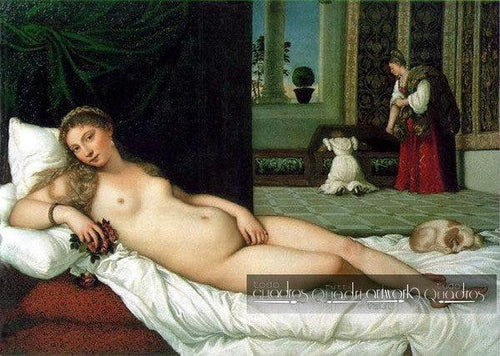
Autor: TitianAño: 1538Se encuentra en: Galería Uffizi, Florencia.Estilo: ManierismoTambién conocida como: Venus del perritoOriginal title: Venere di UrbinoTítulo (inglés): Venus of UrbinoTipo: CuadroTécnica: ÓleoSoporte: LienzoEsta obra se debate entre la realidad y la mitología. Al contrario de lo que sugiere el título, la doncella protagonista es en realidad una persona de carne y hueso, como simboliza el perro que está acurrucado a sus pies. En el fondo se ven dos criadas en un entorno al límite de lo idílico.
Buy it in the section of Titian oil paintings
Related famous painters: relacionados:
- El Greco
- Leonardo da Vinci
- Jan van Eyck
- Peter Paul Rubens
- Giotto di Bondone
- Bartolomé Esteban Murillo
↑Back to top
